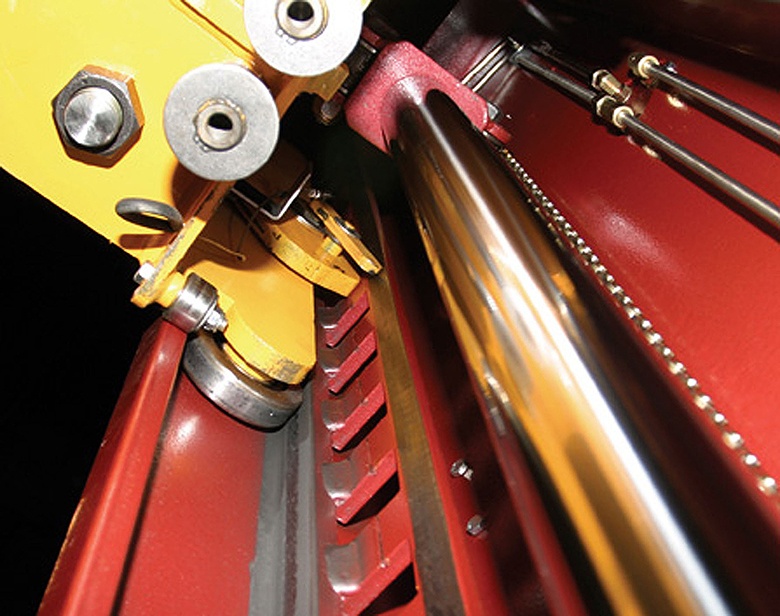
Stay safe and avoid noncompliance fines
The vehicle lifts that are supporting the school buses in your garage can represent one of the most productive tools in your shop, or potentially one of the most dangerous pieces of equipment you own if not used and maintained properly.
If there were an incident in your garage involving a vehicle lift, OSHA would ask you three questions: What did you know? When did you know it? What did you do about it?
Complying with the American National Standards Institute (ANSI), Occupational Safety and Health Administration (OSHA), and Public Employees Occupational Safety and Health (PEOSH) requirements ensure vehicle lifts are kept at the highest possible safety level.
Following these safety tips ensure your technicians are kept safe and that noncompliance fines are avoided.
1. Buy certified lifts & options
There’s one and only one nationally recognized safety standard for vehicle lifts: ANSI-ALI/ALCTV, administered by the Automotive Lift Institute (www.autolift.org).
The Automotive Lift Institute, working though ETL testing procedures, involves rigorous third-party testing verifying lift manufacturers meet and comply with current ALI requirements for lifts as defined by the International Building Code, which mandates that lifts be third party tested to meet these safety requirements. Most every state has building code rules that shops have to follow. To verify equipment status, look for the gold ALI/ETL certification tag next to the lift’s controls.
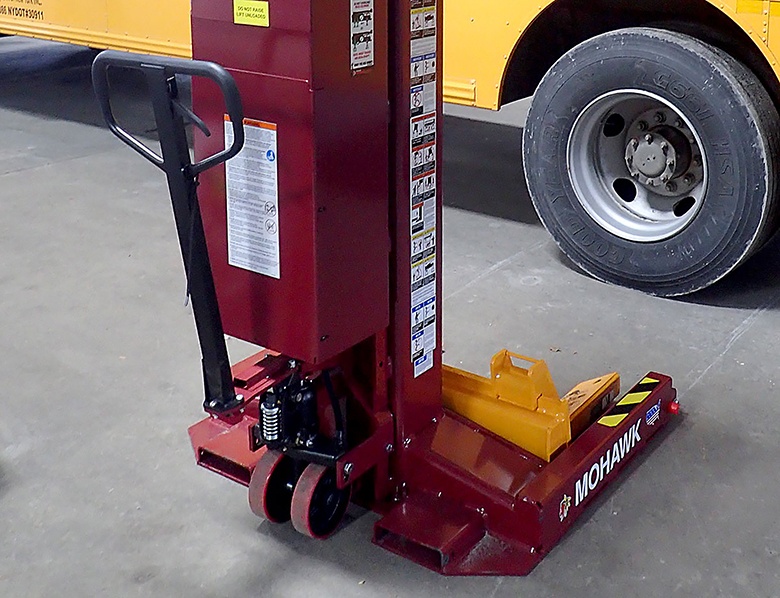
Beware that using an uncertified option voids the lift’s certification. ANSI/ALI standards for Operation, Inspection, and Maintenance (ALOIM 8. Replacement Parts) as well as Installation and Service (ALIS 6.2.6 Repair Service Parts) require all accessories, such as rolling jacks, truck adaptors, lighting for runway lifts, and special lifting pads, to be ALI/ETL certified. ALI/ETL standards (& ANSI standards & building code standards) require all accessories, such as drive-thru runways, rolling jacks, truck adaptors, lighting for runway lifts, and special lifting pads, to be certified. Although certification is good for the life to lift, older models may not meet the most current standards, which typically change every five to seven years. Some lifts and options that were certified in 2000 wouldn’t pass the 2011 standard.
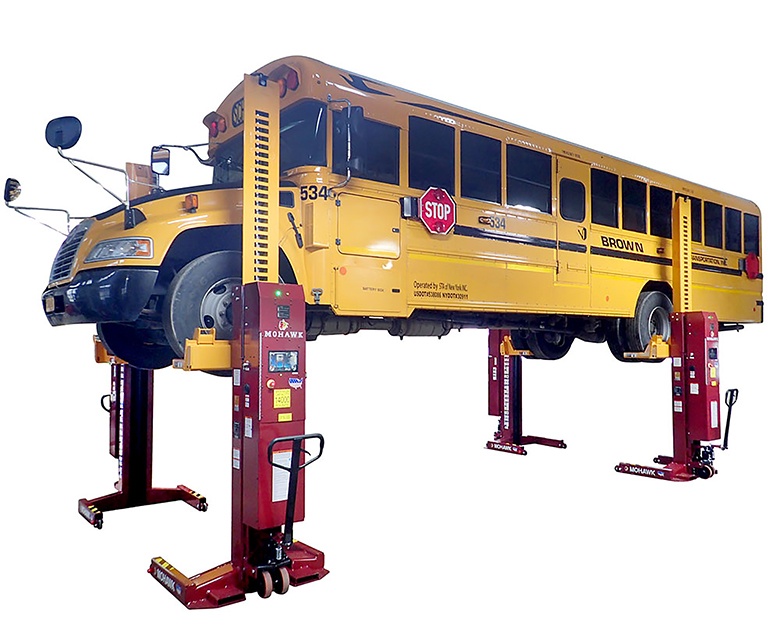
2. No locks = liability
You’ve heard the phrase, “Never use a jack without a jack-stand.” The same is true for vehicle lifts. Always raise the vehicle and then lower it onto the lift’s mechanical locks as suggested by the manufacturer and required by ANSI. Refer to ALI safety manual Lifting it Right or the manufacturer’s operating instructions for detailed information.
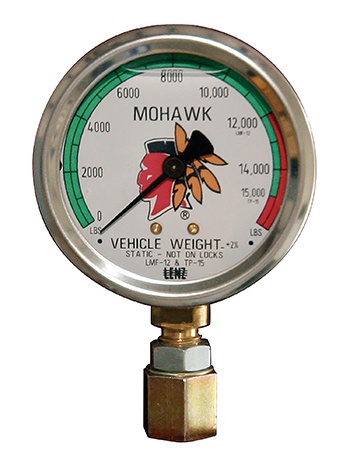 When you’re walking through the shop, make sure techs are using the proper procedure. An easy way to visually verify the locks are being used is to include a weight gauge on your lift. The weight gauge must be made by the same manufacturer so it will be properly calibrated to the lift cylinder size.
When you’re walking through the shop, make sure techs are using the proper procedure. An easy way to visually verify the locks are being used is to include a weight gauge on your lift. The weight gauge must be made by the same manufacturer so it will be properly calibrated to the lift cylinder size.
When you walk by a lift and the weight gauge reads anything but “0”, the tech in that bay hasn’t lowered the lift onto the mechanical locks.
3. It’s easy to overload
Manufacturers of the most common lift – two post, side-by side lifts – mandate that none of the four swing arms be overloaded.
Unfortunately, overloading of lifts happens more than realized. For example, some may think that a 12,000-pound rated lift that’s loaded with an 11,500-pound vehicle isn’t near capacity. They would be wrong.
If this vehicle has a front axle weight of 4,500 pounds and back axle weight of 7,000 pounds. The per-arm capacity of a 12,000-pound rated lift is 3,000 pounds. If the heavier rear end of a vehicle weighs 7,000 pounds, each swing arm needs a minimum arm capacity of 3,500 pounds for safe lifting.
Multiply this example by four swing arms and the minimum capacity of your lift for this vehicle should be 14,000 pounds.
It’s easy to see why two-post, side-by sidelifts are often overloaded, even though the total lift capacity hasn’t been exceeded. Look around your shop and determine if any lifts are being overloaded based on the heavy rear ends of certain vehicles.
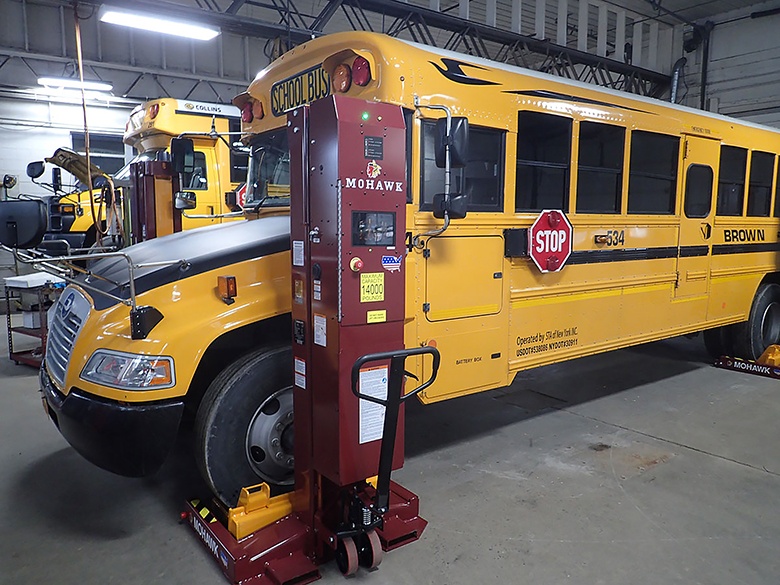
4. Inspect equipment annually
ANSI/Automotive Lift Institute ALCTV Standard for Automotive Lifts – “Safety Requirements for Construction, Testing, and Validation” requires technicians to perform a daily operational safety check. ANSI also requires an annual inspection by a qualified individual. Failing to do so exposes your shop to liabilities that could be associated with an injury if an accident were to happen. Contact your manufacturer or garage equipment sales company to schedule an inspection.
5. Training and testing
Like any product, lifts vary in style, type, capability, longevity, and warranty. ANSI requires technicians to be trained annually in proper lift use. This may seem unnecessary, yet think of everyone who drives a forklift in your facility who is required to take and pass an annual safety test. The test results are added to each employee’s file in case of a forklift incident.
The same applies to vehicle lifts. Contact the Automotive Lift Institute, your lift supplier, or a local lift inspection company for a copy of the 20-minute Lifting it Right video hosted by legendary NASCAR driver Richard “The King” Petty and his son, Kyle. Require your technicians to watch the video and pass a written test on lift operation and safety.
And remember – our lifts are available on nationwide government contract, making them a perfect fit for publicly-operated school districts.
Steve Perlstein serves as sales & marketing manager for Mohawk Lifts, Amsterdam, NY. Visit www.mohawklifts.com for more information.


